|
SCRAPED! Anne & Lars Build a House |
|
Chapter 9: Removal |
|
The house that we bought stood for a hundred years on a steep dirt hillside, in earthquake country, with no foundation to speak of. Not bad for a place that was probably built as a summer cottage.
Sausalito's mild climate was undoubtedly a big help. But several unfinished projects and a lack of exterior maintenance worked against the structure. Examples: 
Side stair collapsed, then this wall that held it up fell off too 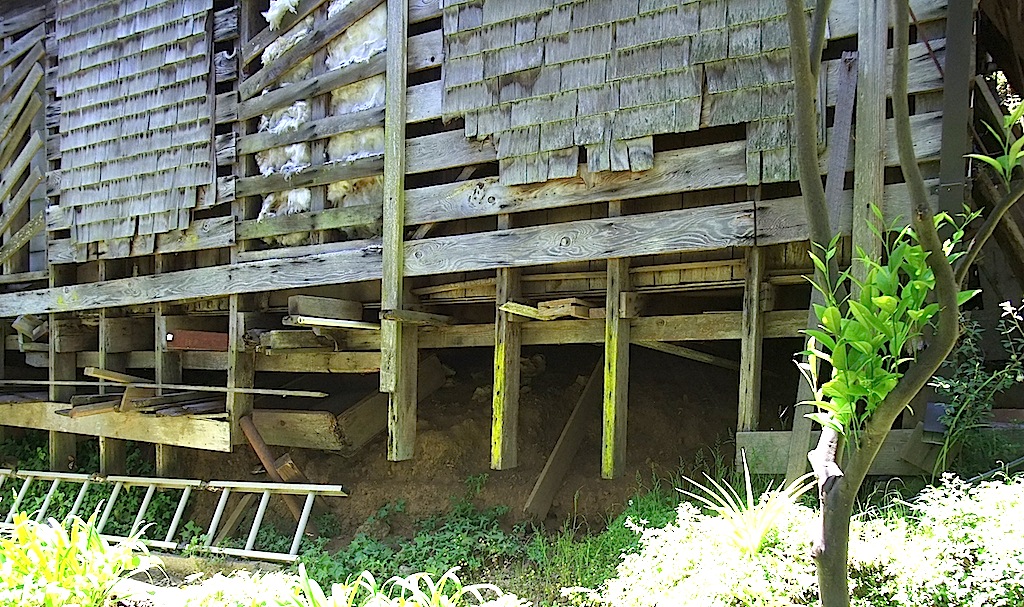
East wall hangs from roof, doesn't quite reach the ground None of the systems—crucially, including foundation and framing—were adequate by modern standards. Although our sentiments run toward reuse, construction and real estate professionals who saw the house were unanimous: preservation would be prohibitively expensive. The house must go. Options We considered straight demolition, but it appeared that deconstruction was also viable. In this process, the house is taken apart with some care, and the materials that can be economically salvaged are saved. You can keep them, sell them, or donate them and take a tax deduction. Deconstruction costs more than demolition. There is extra labor in disassembly and in de-nailing salvaged lumber, along with other post-deconstruction processing. In order to get the tax write-off, you must pay an IRS-certified appraiser to declare the value of your donation. So the salvaged material has to be worth enough to make up for all that. Many deconstructed houses are in good shape, with a lot of cabinetry, decorative millwork, and other pricey accoutrements to recover. Not this one. The interior was largely gone already, with very little in the way of architectural fittings besides a few doors and stair parts. 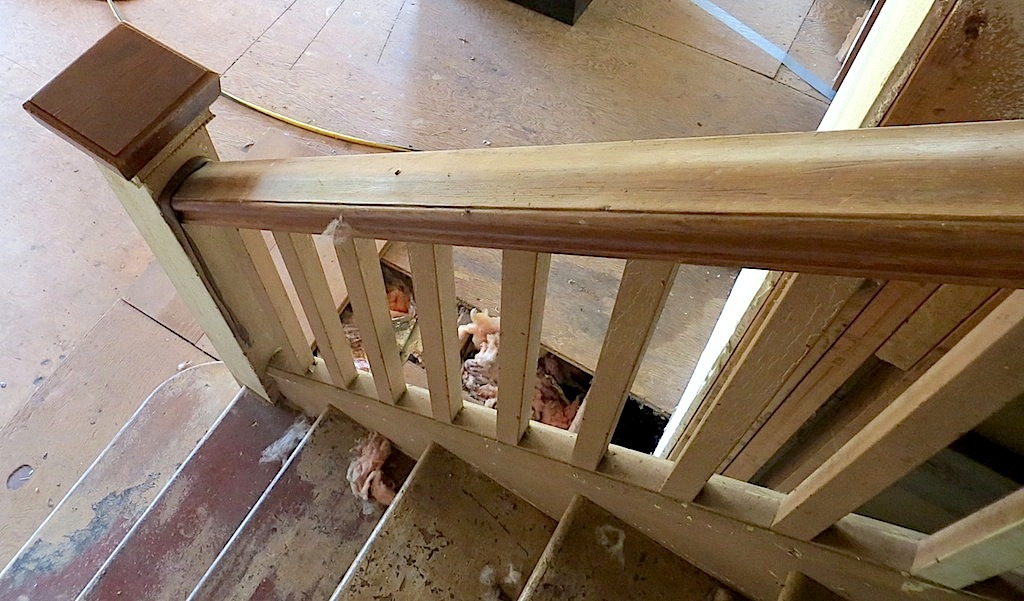
Banister and newel post Most of what the house could offer were its bones: century-old fir or redwood framing lumber. This material is unloved by framers for its hardness and nonstandard dimensions, but woodworkers like it. 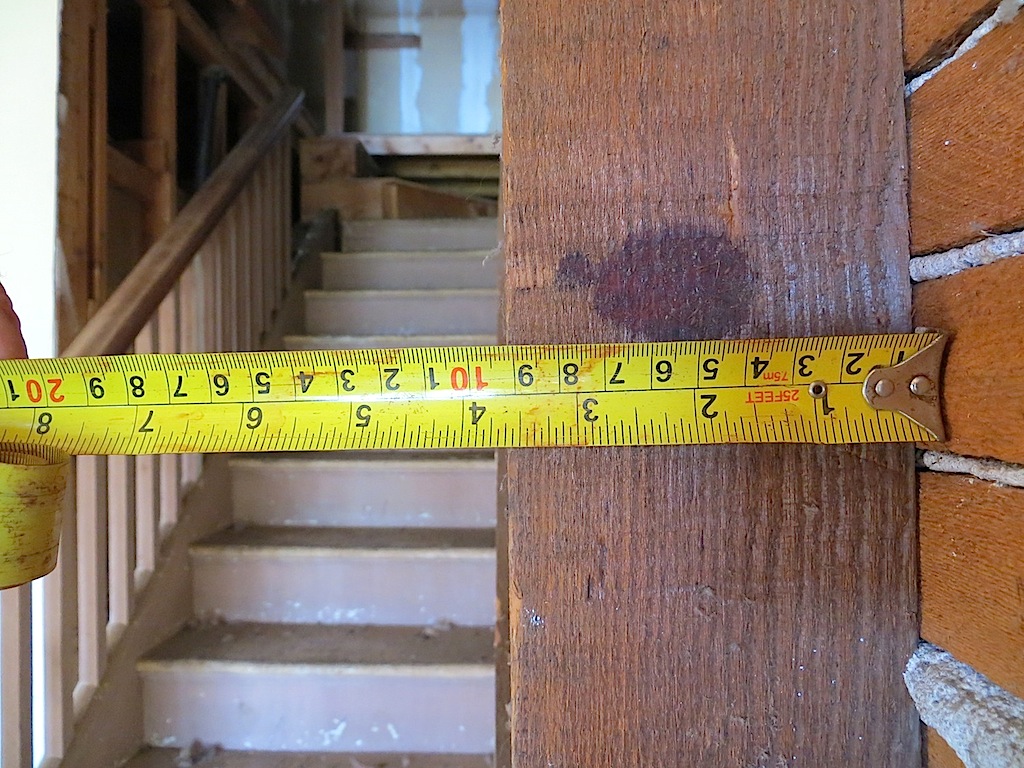
Vintage framing I was tempted to set up a shop and recycle the timbers as trim or flooring material. It could offset costs (counting the price of my own labor as zero, of course) and give the new building additional meaning for us. But there are two problems with this: 1) there's no place to put anything while the site is open to the winter rains for several months; and 2) although my woodworking skills are adequate for certain projects (ones with mostly straight lines), my pace is famously glacial. Our building permit has a two-year limit, which would surely come into play and force me to finish—or more likely abandon—my work. Some members of this household are unfazed by living in a construction site. But not all of them. So we opted for donation. For this relatively small project, the cost of the appraisal alone is $1600. Our appraiser is the dynamic Leslie Suh of H Peter Curran Appraisals (for all your "Donation, Death, Divorce, Downsizing, Debt and Damage" needs!). She agreed to let the demolition proceed and do a quick informal assessment before requiring that we commit to the full appraisal with a 50% deposit. Will the salvage yield be worth it? They are still processing the leftovers. Stay tuned. Disassembly The Reuse People of Oakland did the deconstruction and salvage. They set a torrid pace. 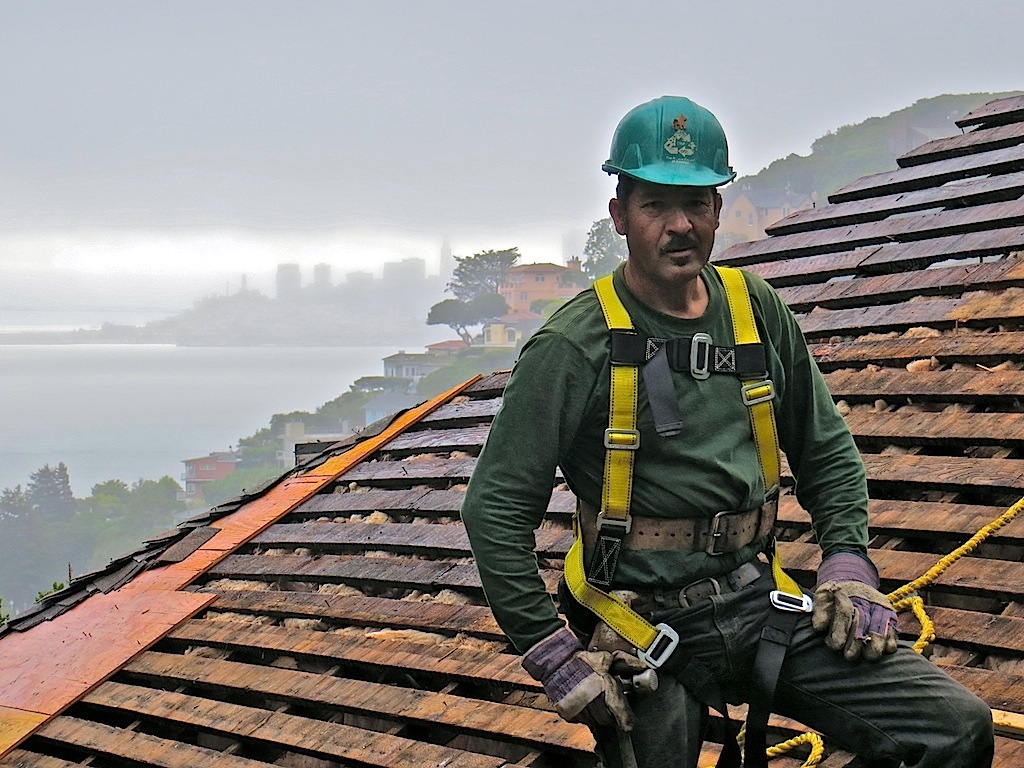
Rigged for safety 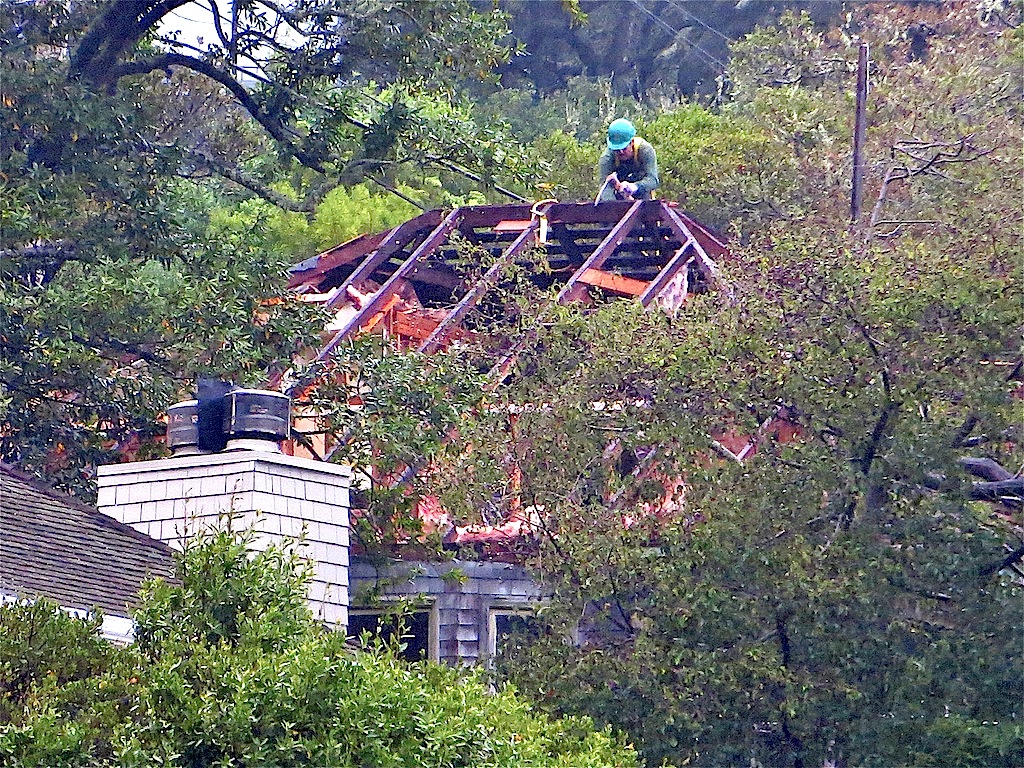
We can see and hear progress from our current apartment 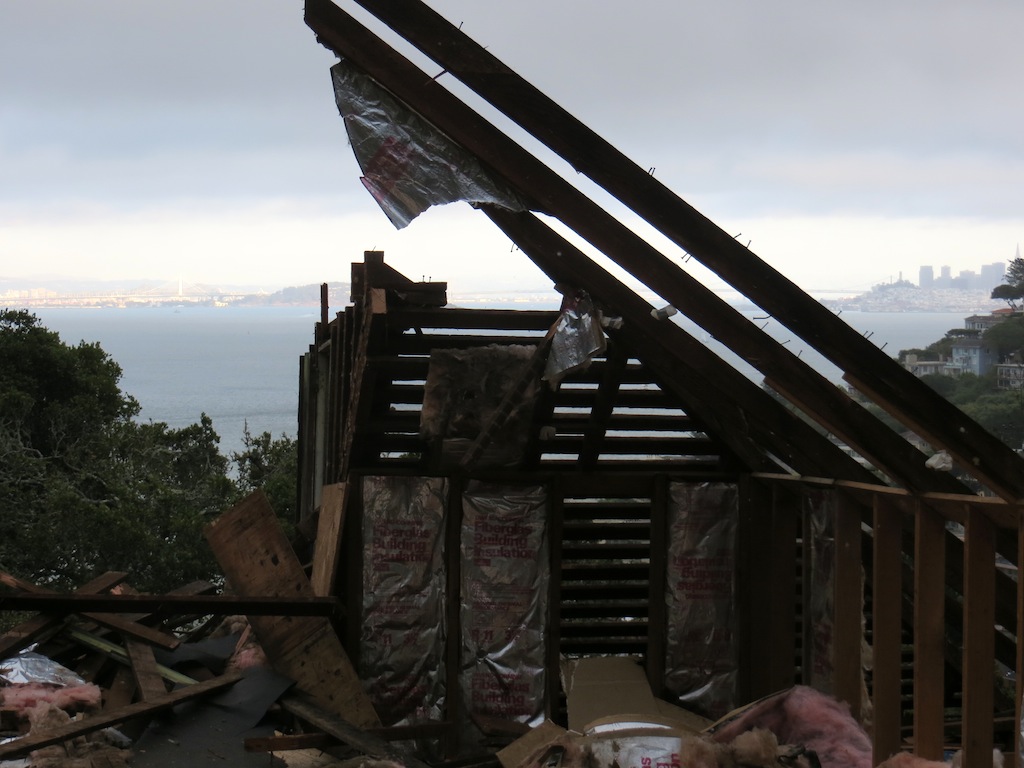
Attic level now gives a real sense of the view 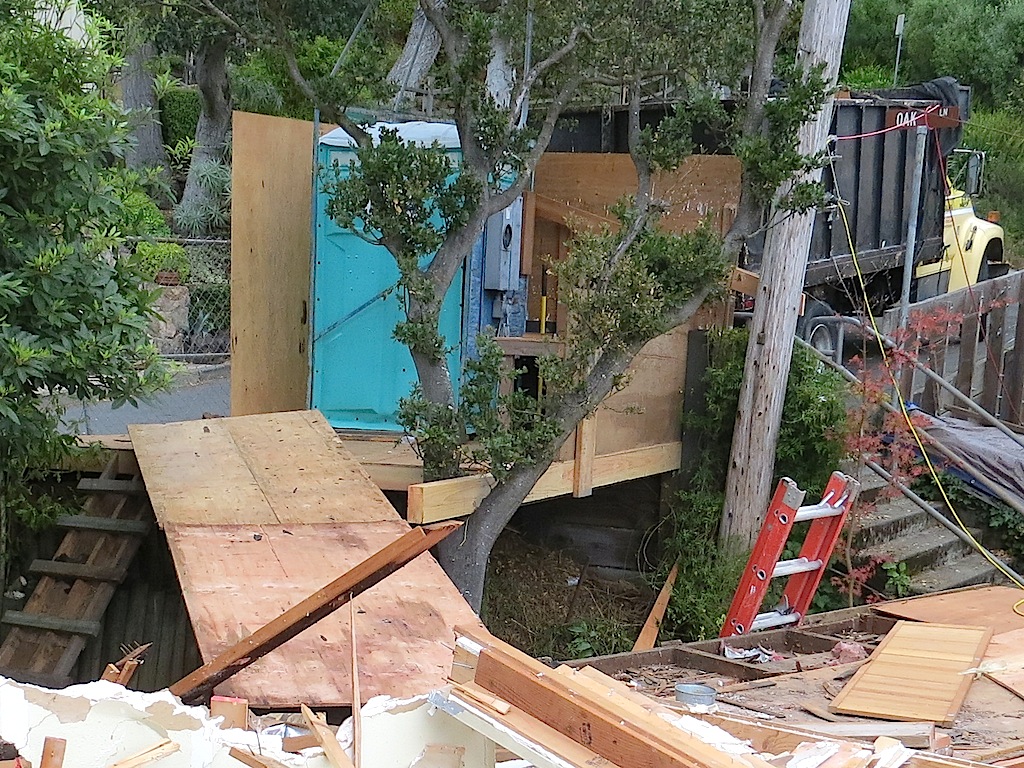
Plywood catwalk from platform to house echoes a design feature that we eliminated to save money 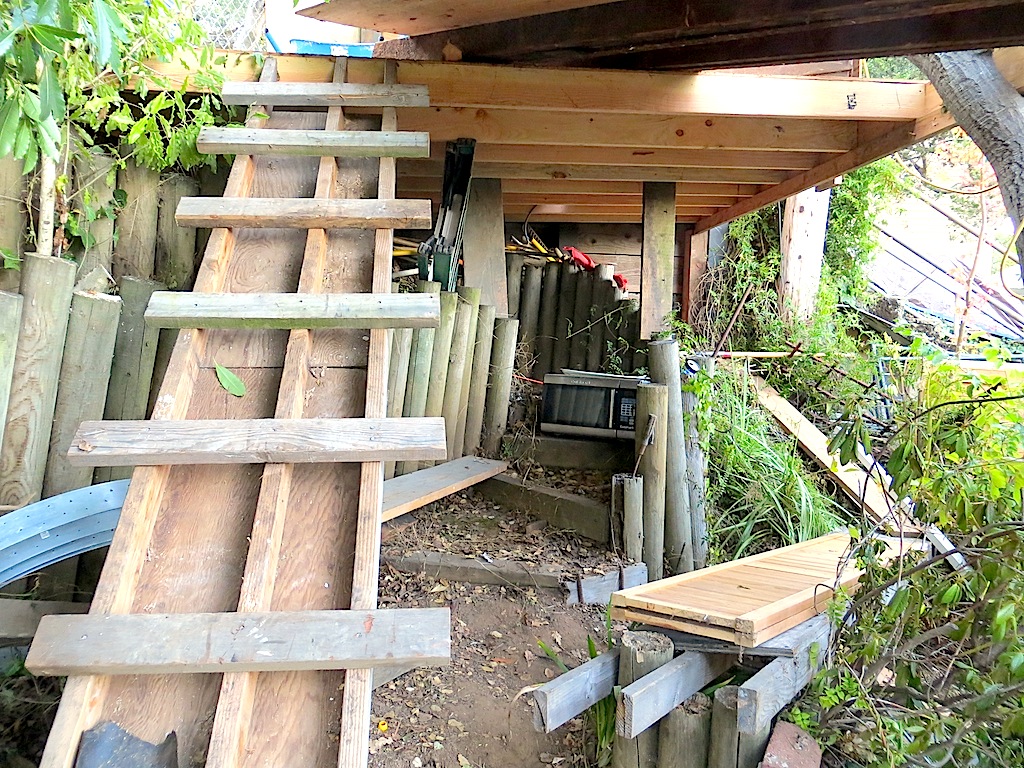
Workers set up lunch room under the platform 
Site has a good view of America's Cup races—will they be back next time? 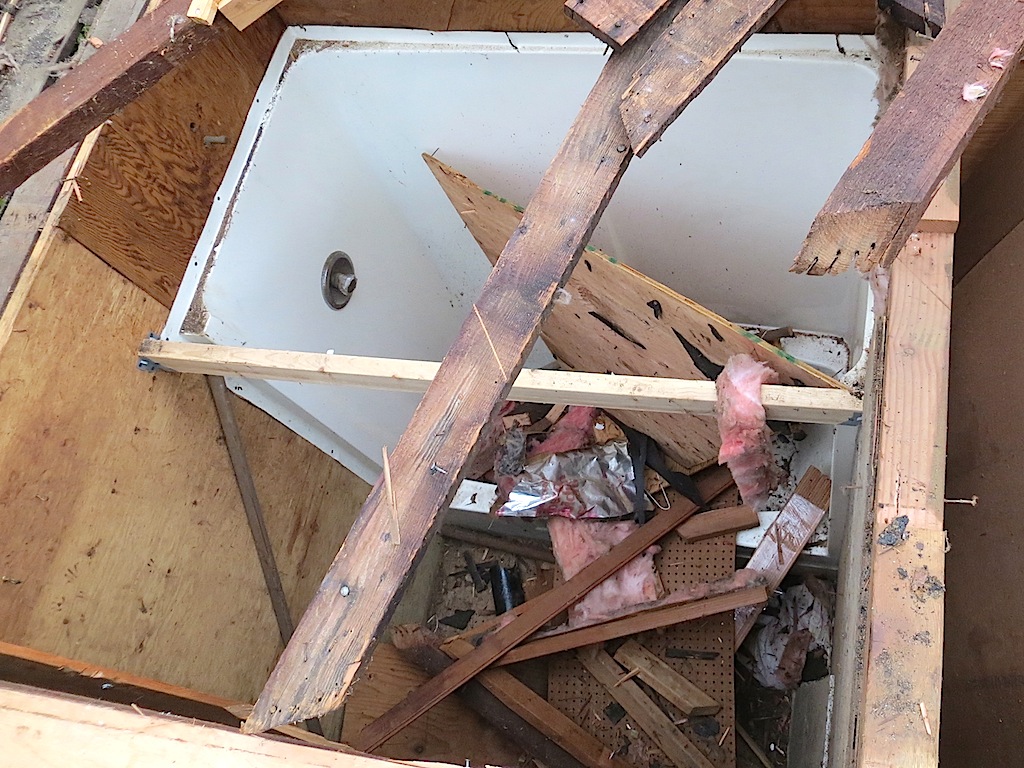
Bathroom hidden behind main entry, discovered when attic floor was removed 
Archaeological treasures have much to teach us 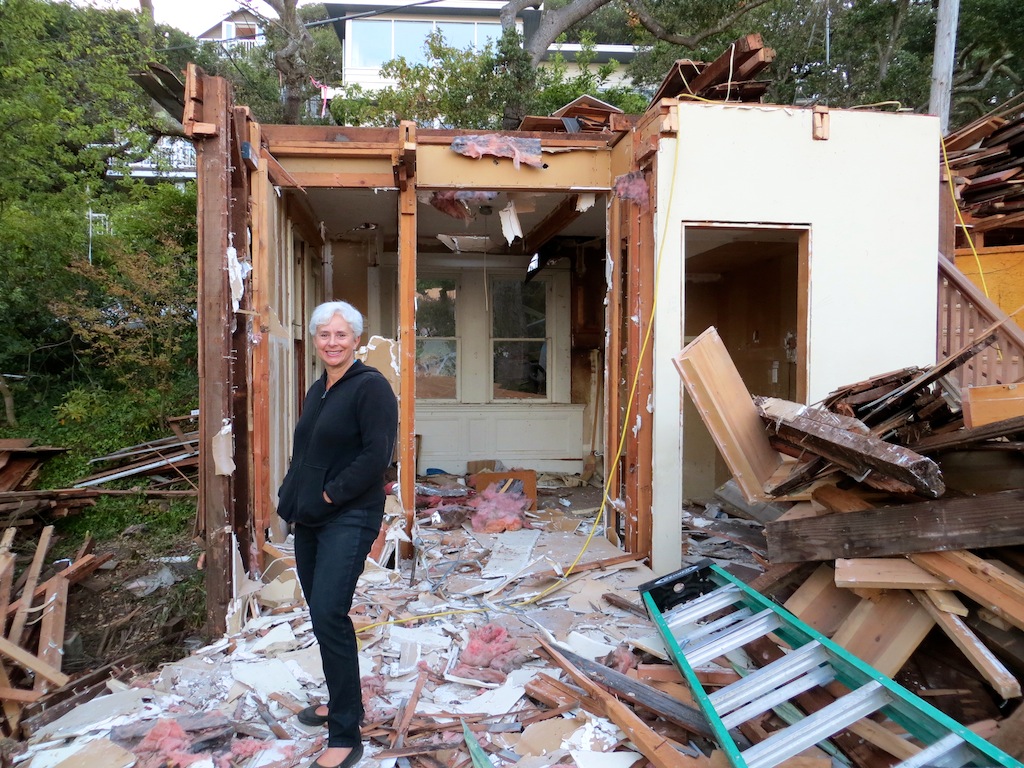
Happy things are happening at last 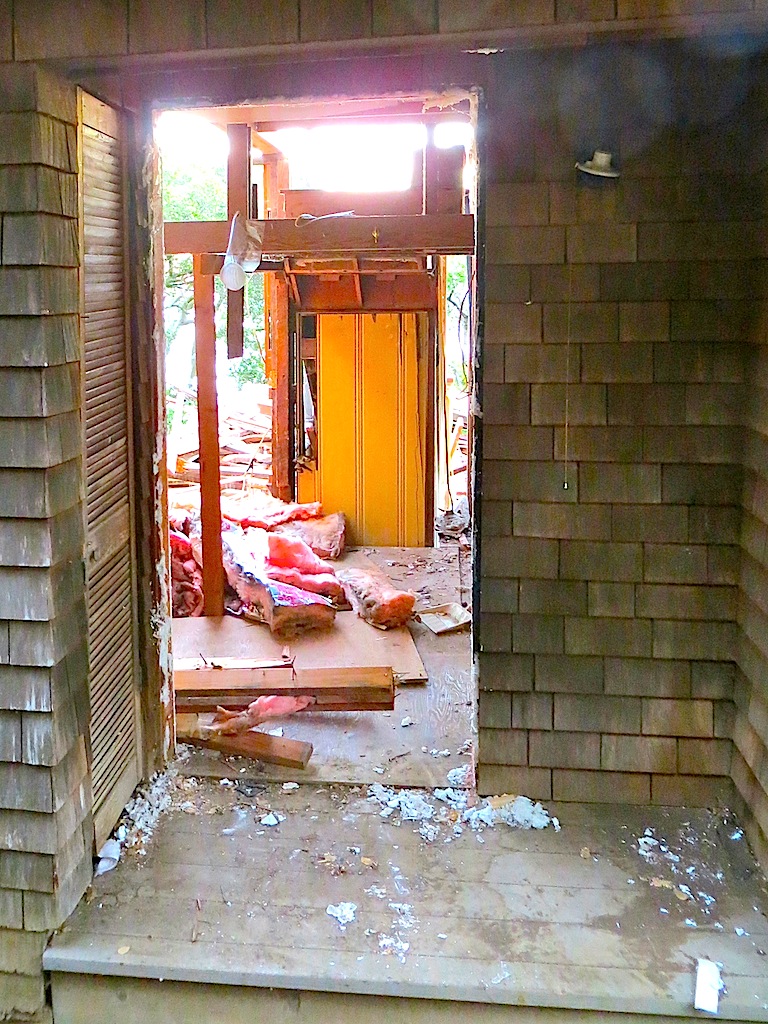
Front door, without the door 
The Iron Giant's litter box (i.e. sash weights) 
We get to keep the "foundation" 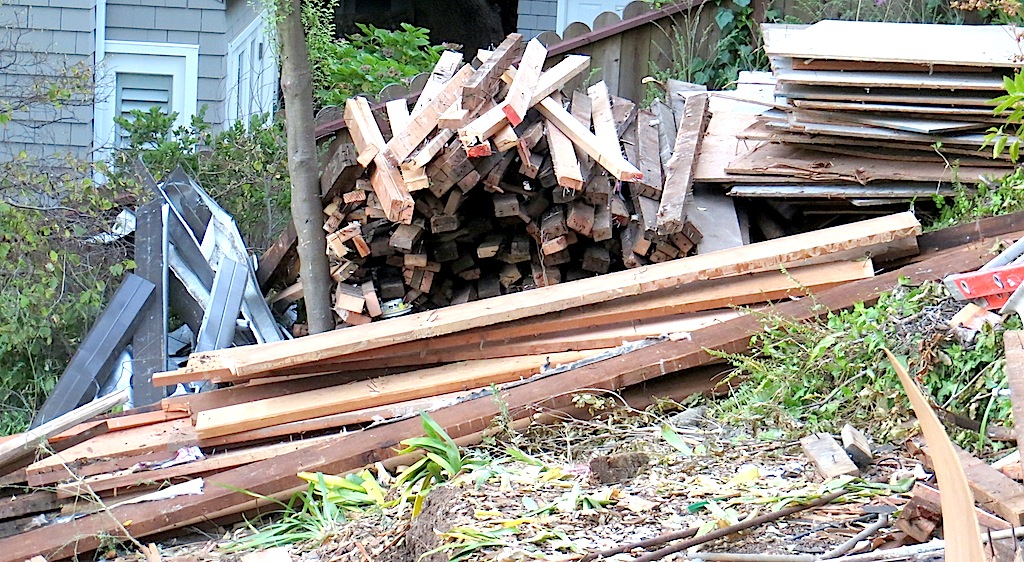
Salvage piles 
A good omen Time-Lapse The Reuse People estimated two weeks to clear the site. Let's see how they did: 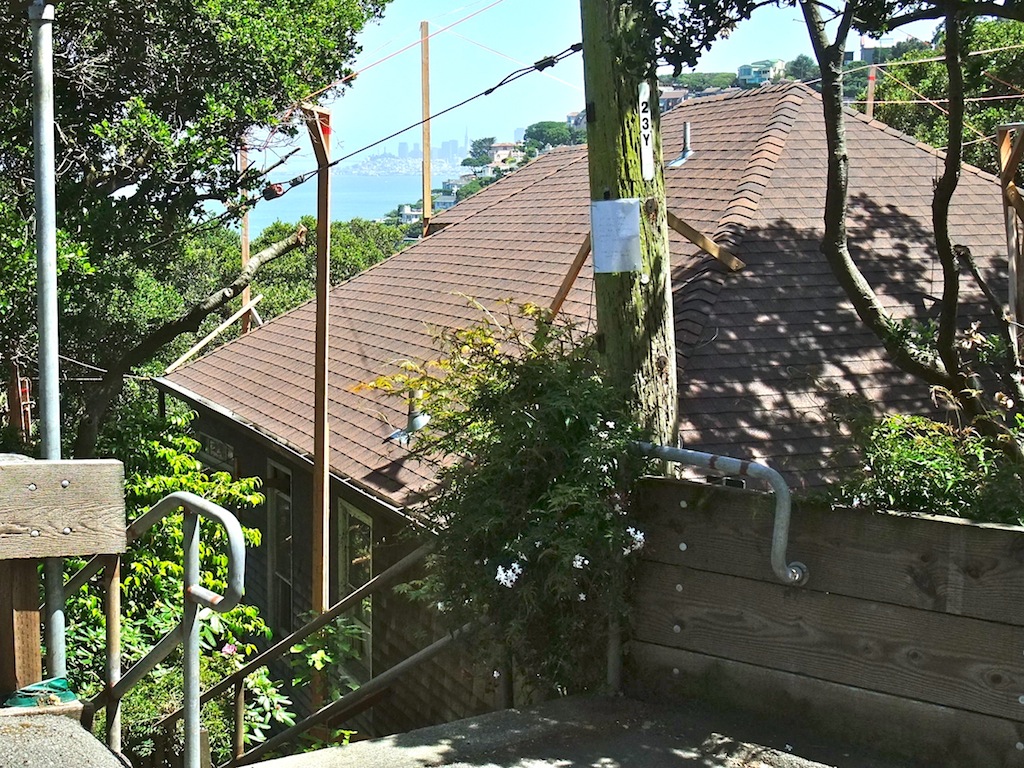
Last summer, before deconstruction 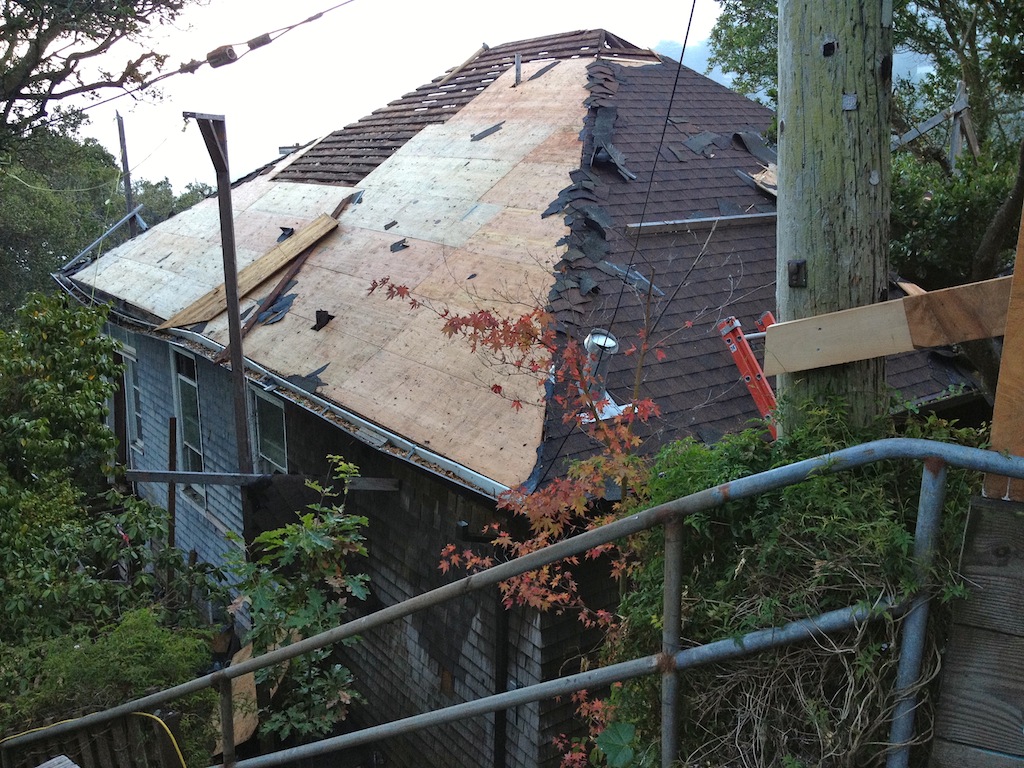
Day 1 (Mon Sep 9) Roof sheathing on other side is already gone 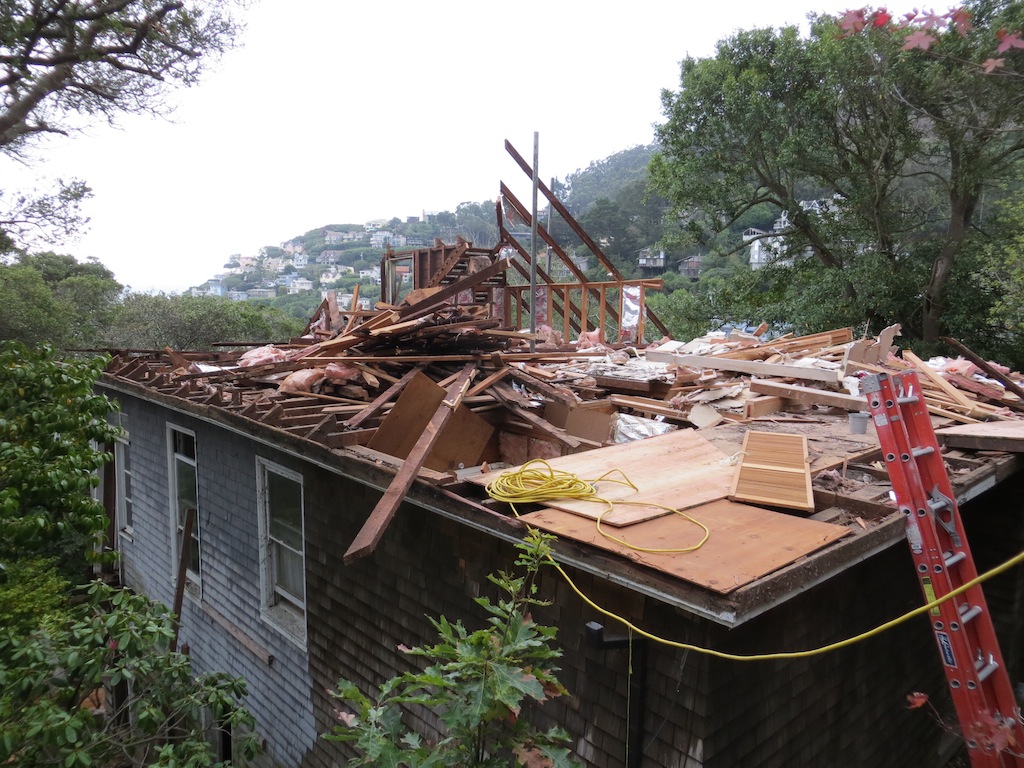
Day 2 (Tue Sep 10) Attic framing is gone, exposing future living floor views 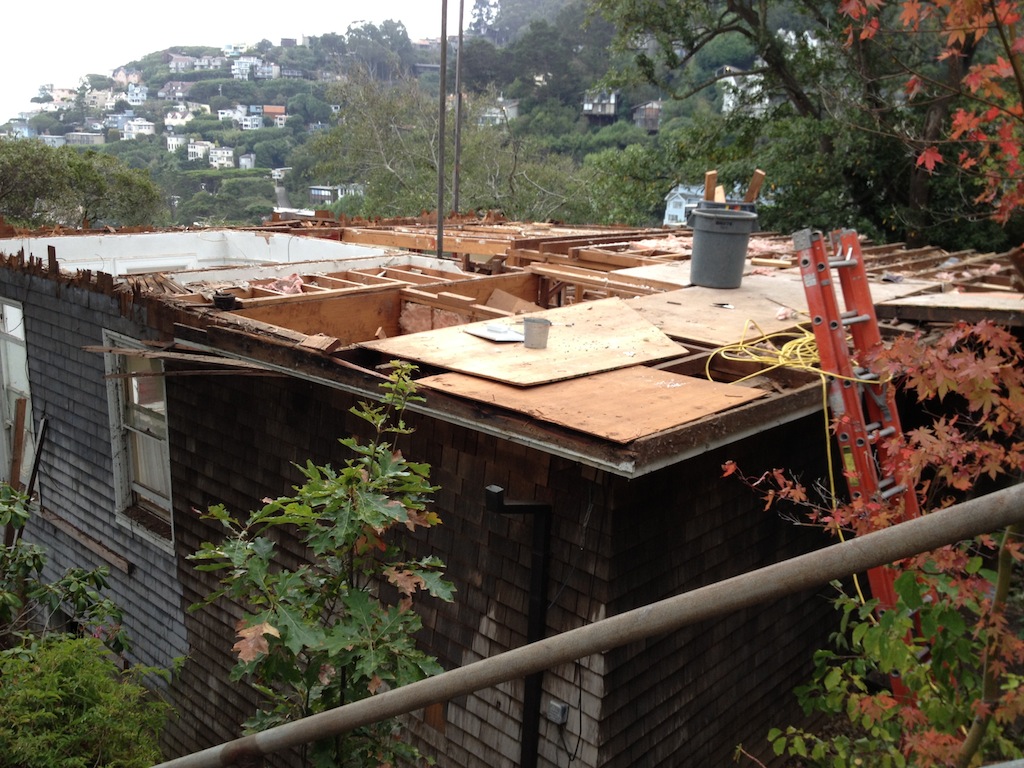
Day 3 (Wed Sep 11) Attic floor removed, hidden bathroom discovered 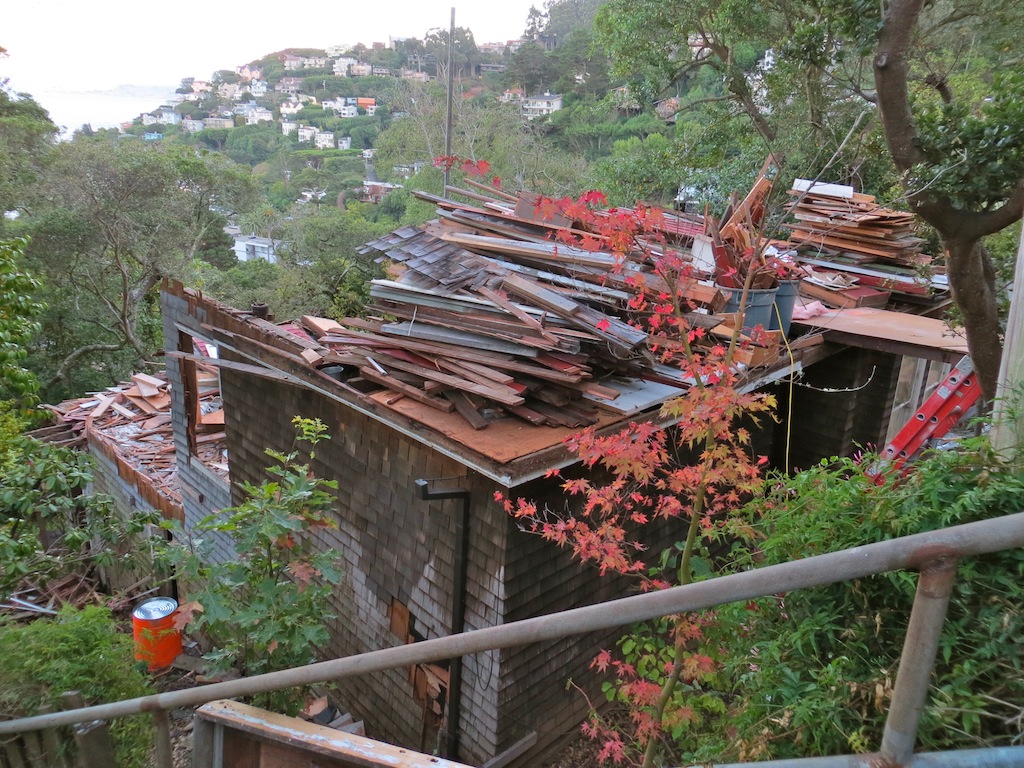
Day 4 (Thu Sep 12) Half of main floor removed 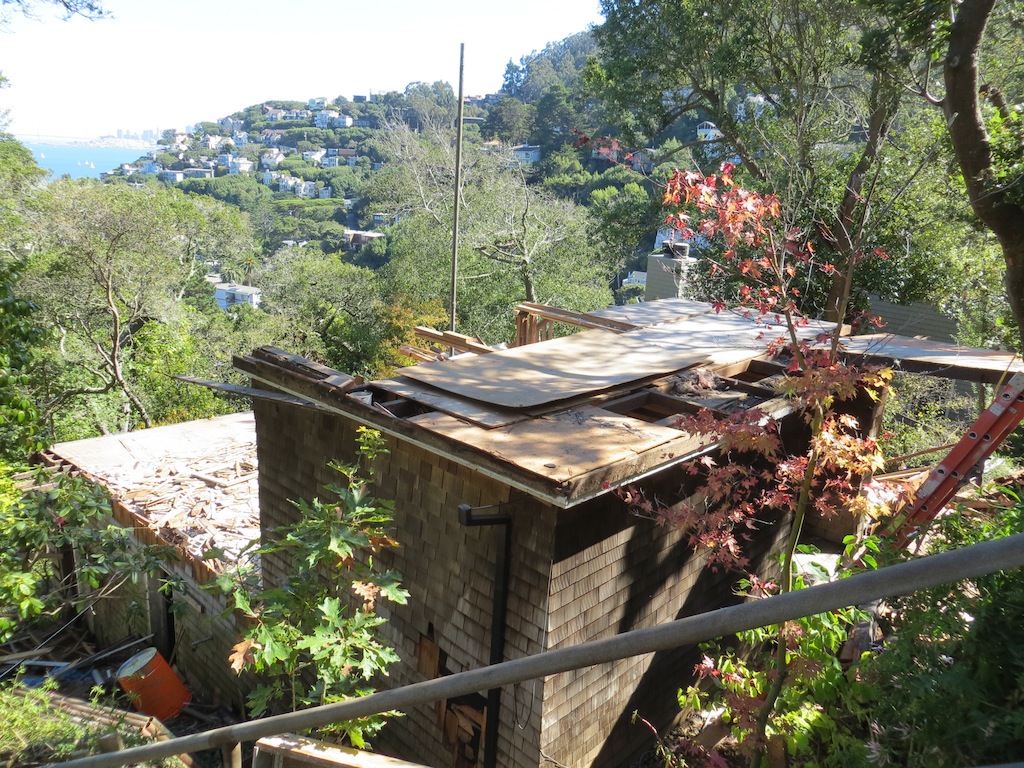
Day 5 (Fri Sep 13) Dump day! Salvaged material is cleaned up 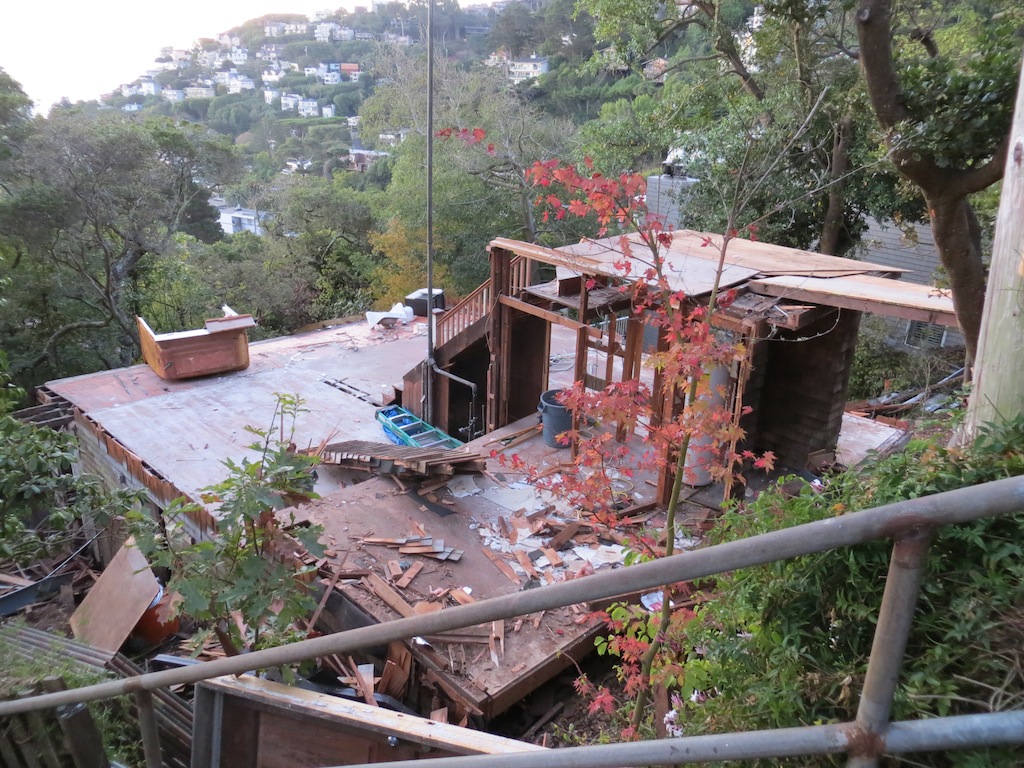
Day 6 (Mon Sep 16) Attic stair to catwalk remains as main removal route 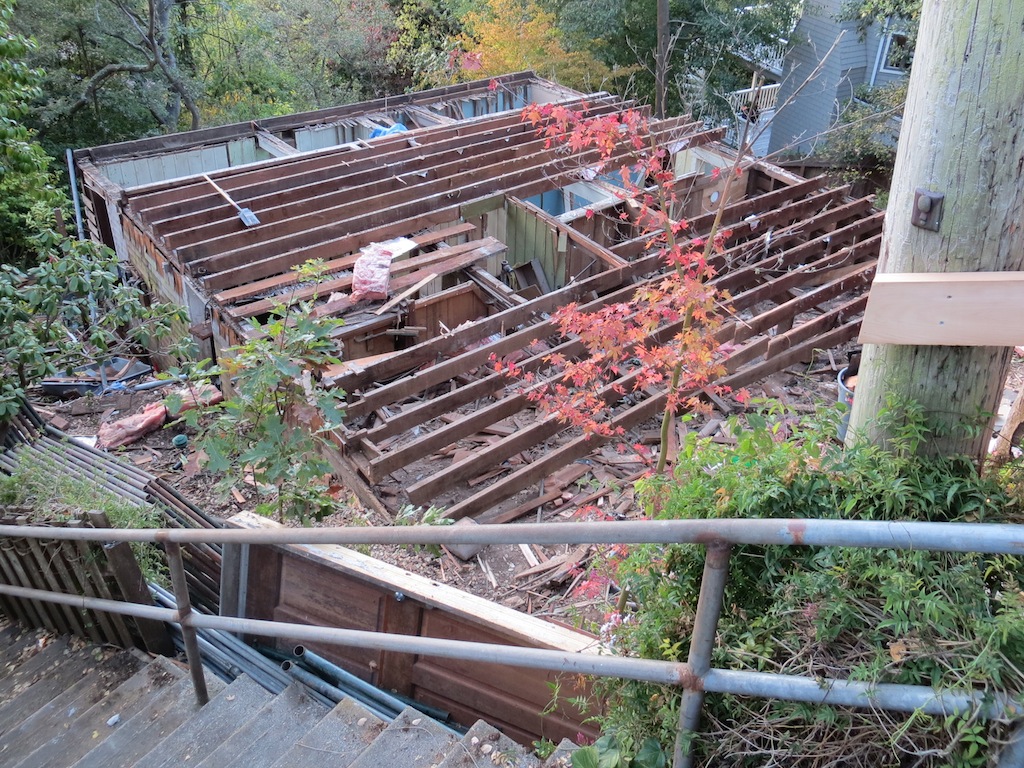
Day 7 (Tue Sep 17) Main floorboards removed, exposing nice 2x8 framing 
Day 8 (Wed Sep 18) First time we have ever seen views from basement level 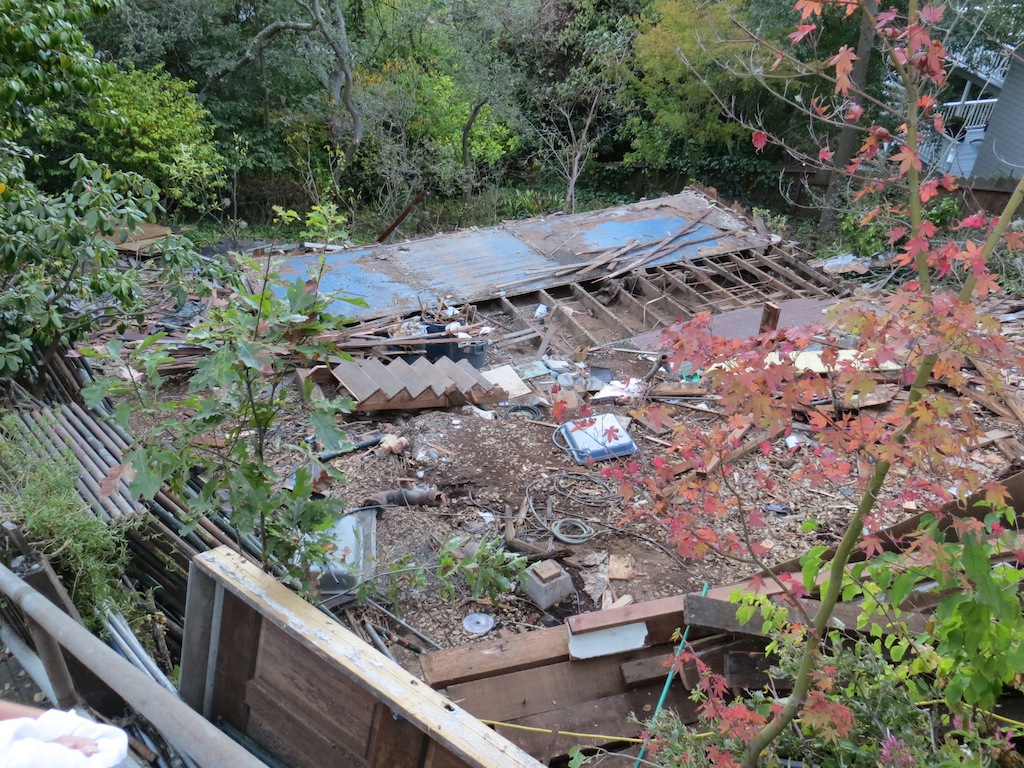
Day 9 (Thu Sep 19) Basement flooring nearly gone 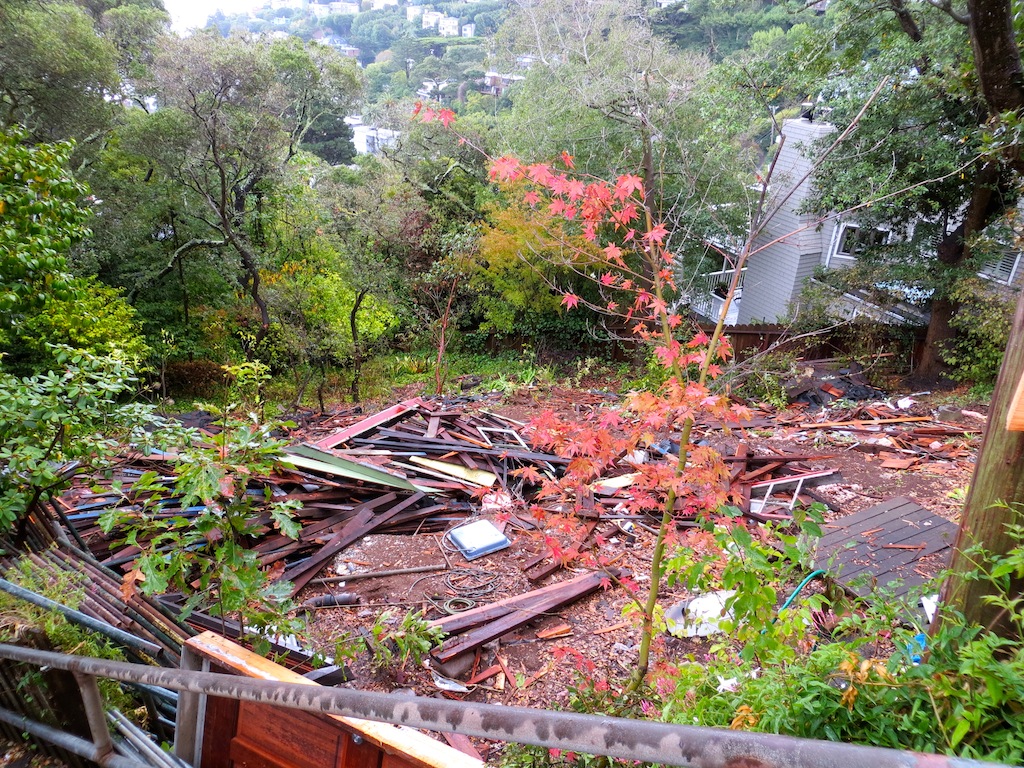
Day 10 (Fri Sep 20) All structure is removed, many piles remain 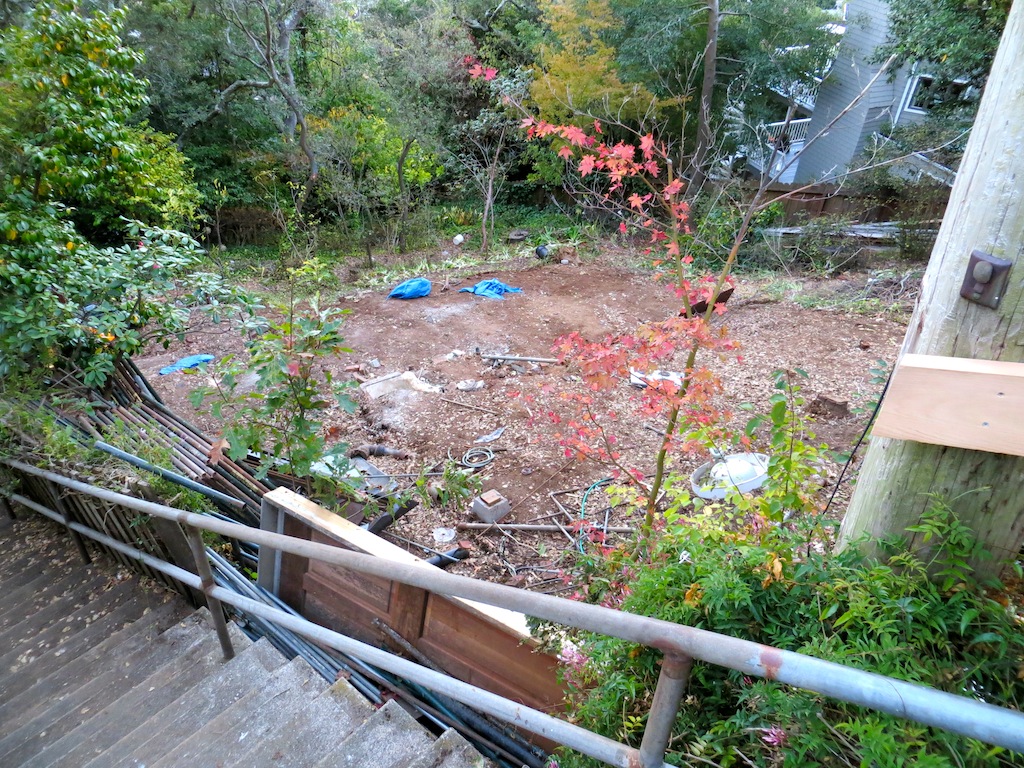
Day 11 (Mon Sep 23) Almost done! A few piles left 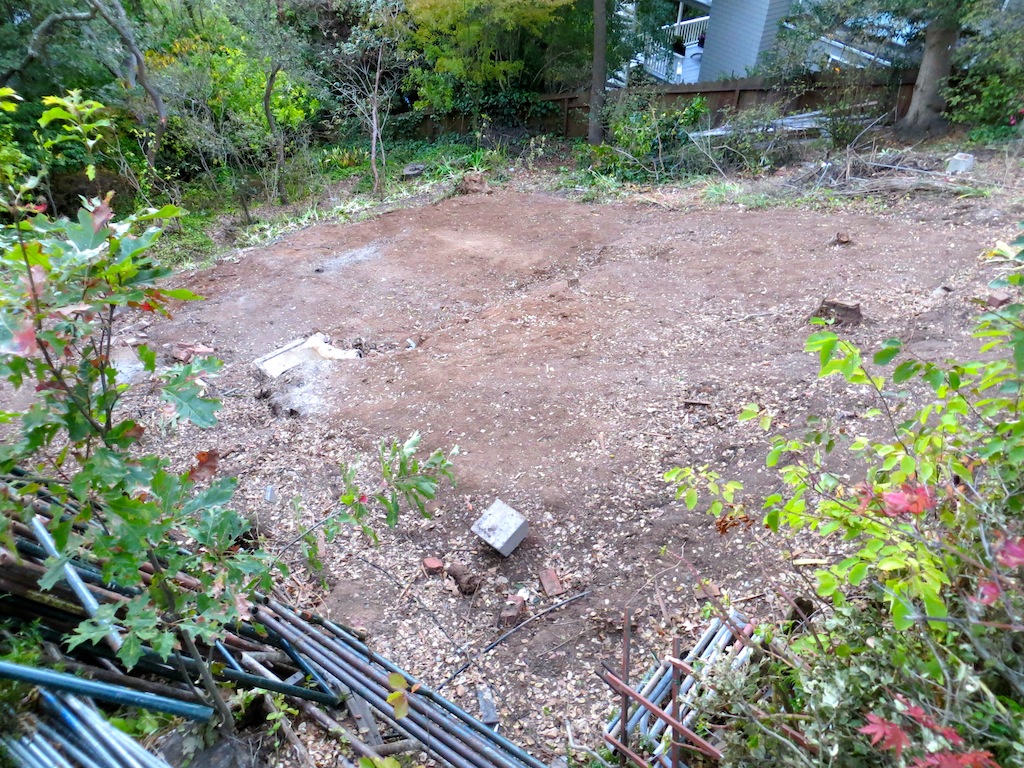
Day 12 (Tue Sep 24) All material removed, dirt raked and ready So they missed it by a day and a little. We were very impressed by the pace of this crew, especially with no heavy equipment. But on a two-week project, one day is a ten percent slippage. Applied to the whole schedule, that's an extra month of carrying costs and rent, which are not cheap. Can we do better? Time will tell. Next up: we dig some holes. |